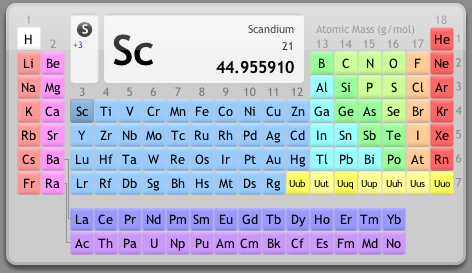Posts Tagged ‘transition metals’
Simplifying the Organometallic Complex (Part 2)
Now it’s time to turn our attention to the metal center, and focus on what the deconstruction process can tell us about the nature of the metal in organometallic complexes. We’ll hold off on a description of periodic trends of the transition series, but now is a good time to introduce the general characteristics of the transition metals. Check out groups 3-12 in the table below.
The transition metals occupy the d-block of the periodic table, meaning that, as we move from left to right across the transition series, electrons are added to the d atomic orbitals. Just like organic elements, the transition metals form bonds using only their valence electrons. But when working with the transition metals, we need to concern ourselves only with the d atomic orbitals, as none of the other valence subshells contain any electrons. Although the periodic table may lead you to believe that the transition metals possess filled s subshells, we imagine metals in organometallic complexes as possessing valence electrons in d orbitals only! The reason for this is somewhat complicated, but has to do with the partial positive charge of complexed metals. Neutral transition metal atoms do, in fact, possess filled s subshells. Why, then, is it important to remember that the valence electrons of complexed metal centers are all d electrons? We will see that the number of d electrons possessed by a complexed metal is in many ways a useful concept. If you find that your counts are off by two, this common mistake is probably the culprit! Read the rest of this entry »
Written by Michael Evans
January 4, 2012 at 3:41 pm
